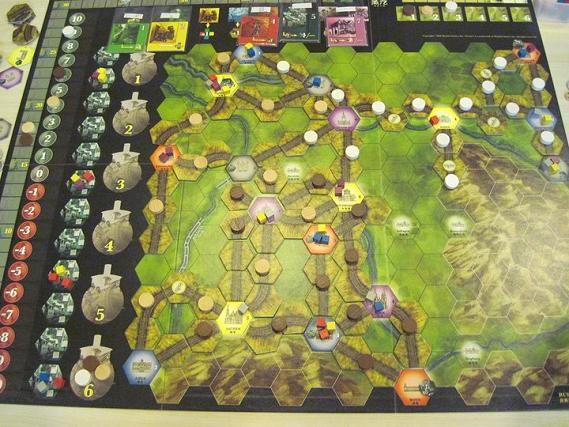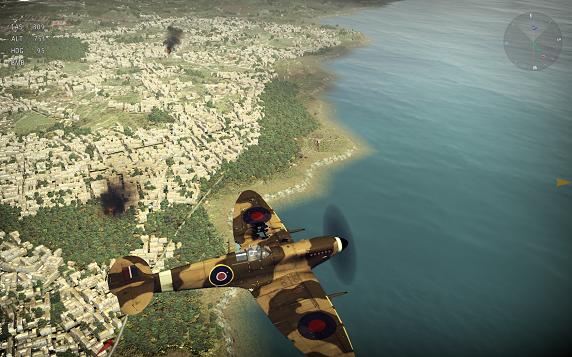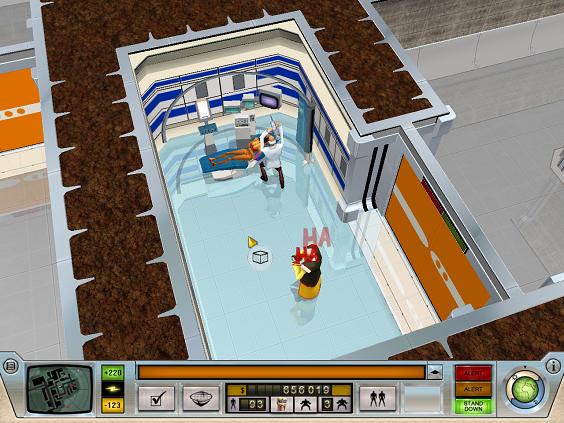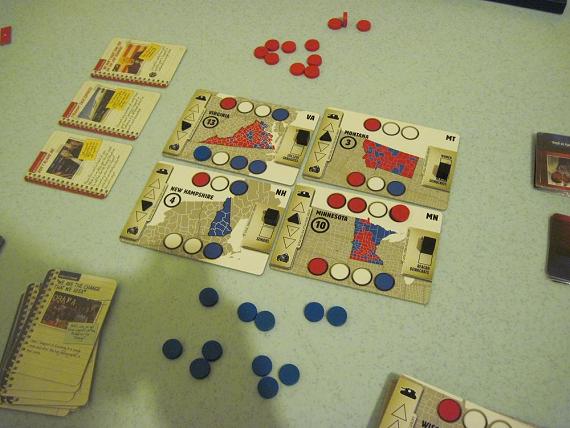
We first played Age of Steam a while back, long enough ago for me to forget almost everything about it. It is essentially the same game with some modifications. The lawsuit thing confuses me so I’m not going to dwell on that and will just go straight to my thoughts about the game.
- The components are professionally-produced and consequently much nicer this time around. There’s now a separate Victory Point track in addition to the Income track so players must choose which of the two to advance. Both of these tracks plus the goods available for future production and the locomotive level are now all integrated onto the main board, making everything neater. The special powers available for selection each turn are now implemented as role cards and there is even space on the board for them now.
- We played the Base version of the rules, which omits the cut-throat mechanism of forcing players to calculate and raise in advance each turn exactly how much money they will need. Instead, you can simply move down the Income track any time you need cash for $5 per space. Another simplification was that the bidding for turn order happens only once at the beginning of the game. After that, turn order is determined by the numbers on the role cards the players selected the previous turn. Needless to say, this makes things much easier and I think probably makes the game go faster because players don’t have to agonize over how much money to raise. I understand that this eliminates some of the tension found in Age of Steam but I was surprised to note that quite a few people prefer these Base rules to the Standard ones which are closer to the original.




